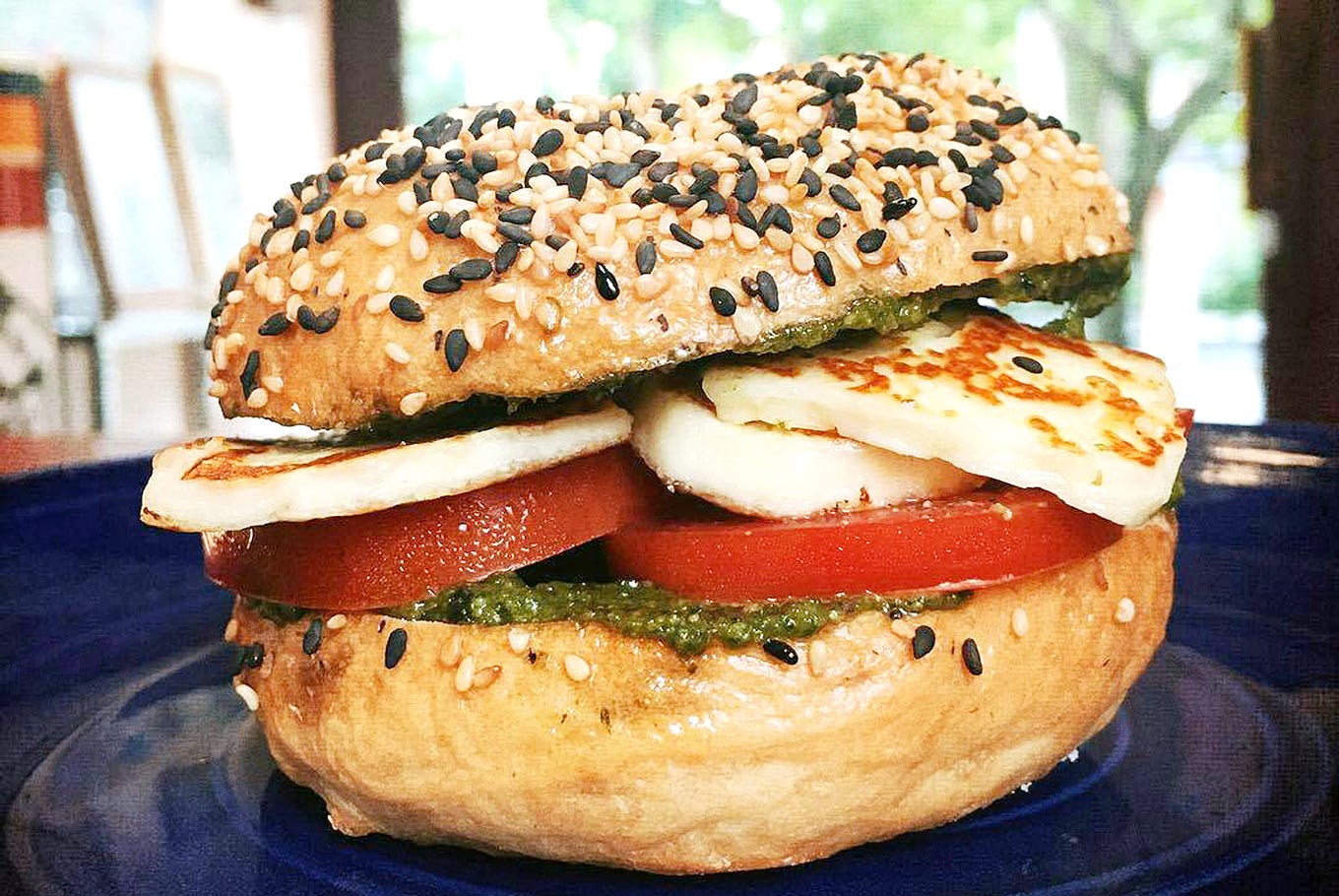Popular Reads
Top Results
Can't find what you're looking for?
View all search resultsPopular Reads
Top Results
Can't find what you're looking for?
View all search resultsCheese story: Local artisans spread their love of cheese
Cheese, mostly still imported, has been increasingly inseparable from Indonesia’s culinary favorites as well as various traditional snacks.
Change text size
Gift Premium Articles
to Anyone
T
he popularity of cheese in Indonesia makes it only natural for the country to produce its own cheese, because milk as its basic material is sufficiently available.
Milk-producing cattle like cows and goats are widely raised in the country, and besides animal protein, cheese can also be made from vegetable sources of milk such as soybeans, almond seeds and other nuts.
The founders of Yogyakarta-based Mazaraat Artisan Cheese recently shared their experience in cheesemaking in Bali.
Stressing the use of milk in making cheese, married couple Muhamad Najmi (also known as Jamie) and Nieta Pricillia turn to local organic milk as their basic material.
According to the young pair, only about six Indonesian families are engaged in cheese making.
Some 10 people gathered at a stall in Denpasar recently to learn how to make cheese as part of the cooperation between Mazaraat and organic shop Satvika Bhoga.
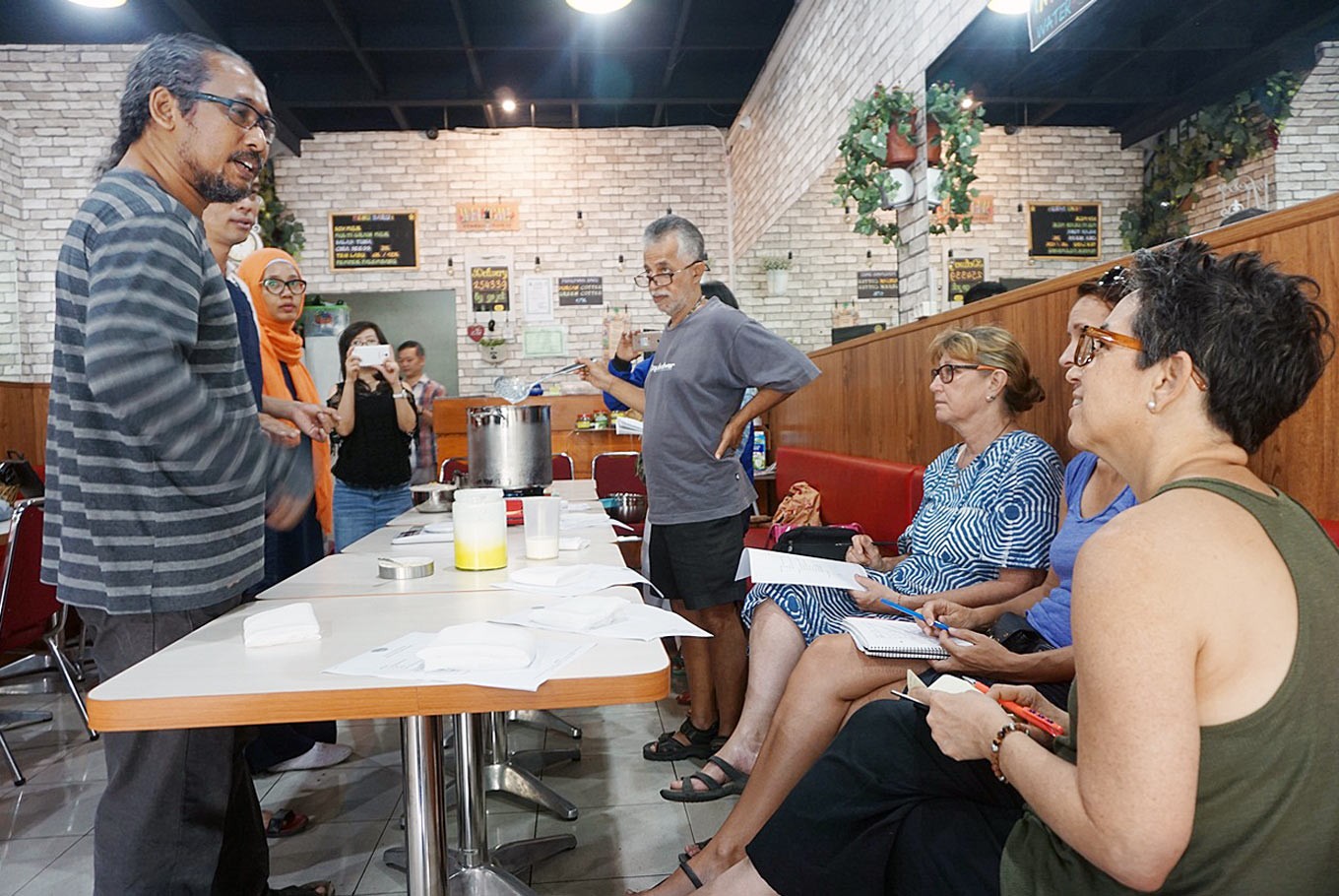 Into cheese: Participants learn about cheese during a workshop organized by Mazaarat in Bali. (JP/Luh De Suriyani)
Into cheese: Participants learn about cheese during a workshop organized by Mazaarat in Bali. (JP/Luh De Suriyani)
The equipment prepared included a portable gas stove and a stainless steel pan, in addition to milk and other nutritious ingredients. The four main ingredients needed are milk, kefir grain (to make kefir milk), rennet as an enzyme and salt.
According to Jamie, Mazaraat cheese obtains milk from cow breeders in Yogyakarta.
“Local organic milk is the best, with a maximum transportation distance of 30 kilometers,” he said, explaining that the farther the milk source is located, the less balanced its fermentation will be.
When facing difficulties securing fresh milk, such as in Bali, the closest material that can be used is pasteurized milk.
The second crucial ingredient is kefir, a cheese culture medium to be mixed with milk. Add kefir to 1 liter of milk, cover the mixture with cloth and leave it for 24 hours at room temperature. Before further processing, strain it with a plastic tea sieve to produce kefir milk and new kefir grains for further cheesemaking.
 Picture perfect: Chef William Wongso takes a photo of dish Sate Rica Keju (spicy cheese satay), which uses halloumi cheese that does not melt when fried or grilled, making it a perfect meat alternative.(Mazaraat/File)
Picture perfect: Chef William Wongso takes a photo of dish Sate Rica Keju (spicy cheese satay), which uses halloumi cheese that does not melt when fried or grilled, making it a perfect meat alternative.(Mazaraat/File)
Ten liters of milk are needed to make about 1 kilogram of cheese. In the demo class in Denpasar, Jamie processed 4 liters of milk that was only mixed with 60 milliliters of kefir milk. Any amount of kefir milk left can be consumed, which is good for cell regeneration and stabilizing blood sugar levels.
The next step is to cook the blend of milk and kefir milk by warming it on a stove with a temperature increase of around 1 degree Celsius every five minutes until it reaches 32 degrees, as shown on a thermometer immersed in the milk being stirred slowly. Heating it too fast will cause coagulation.
The third ingredient is the enzyme rennet, the only ingredient still imported as production requires special laboratory equipment.
“It’s uneconomical to produce rennet, especially as Indonesia only has six cheese artisans so far,” said Jamie.
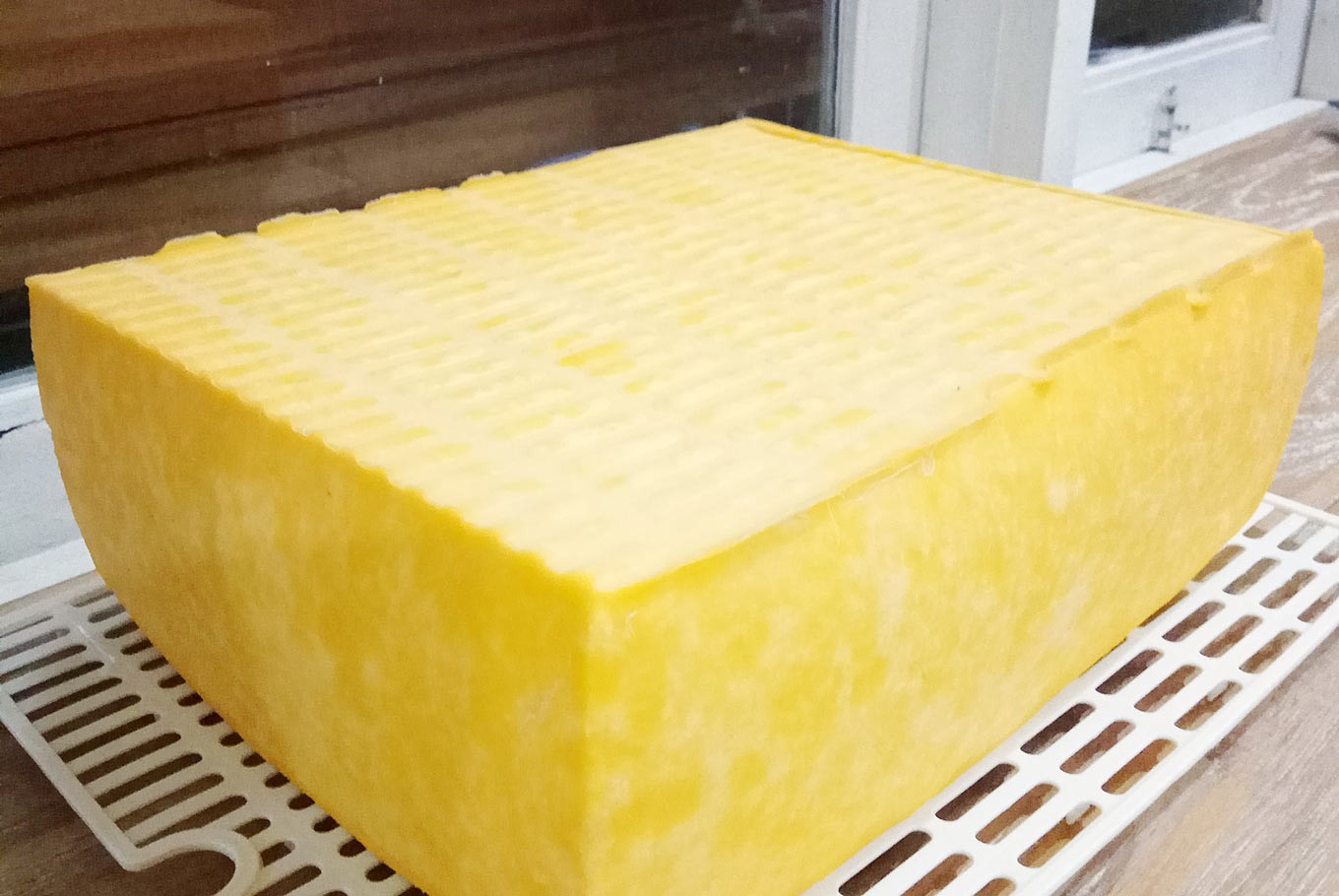 Colby cheese(Mazaraat/File)
Colby cheese(Mazaraat/File)
Some 1/8 tablespoons of this curdling agent per 4 liters of milk is added to the already soured milk; stir for 20-40 seconds until the enzyme is thoroughly mixed and leave it for 60 minutes.
Monitor the texture of the curd this produces and wait a few more minutes if it is not yet solid. This is followed by adding organic sea salt as the last ingredient. Iodinated salt should be avoided as the chemical kills the bacteria needed. Bali produces high quality sea salt, like Amed salt in Karangasem and Kusamba Farmers Salt in Klungkung.
Fresh cow milk is more economical for cheesemaking, which in Yogyakarta costs about Rp10,000 (74 US cent) per liter.
Mazaraat also aims to educate buyers about cheesemaking. For example, the process yields various nutritious byproducts like butter and milk fat. The other is whey, a protein from liquid remaining after cheese curd forms, which is widely used for bodybuilding. Kefir, too, is processed into facial masks. Low-fat milk is one byproduct that is often discarded by local cheese artisans due to the lack of technology to process it, despite the fact that properly-processed and packaged low-fat milk commands a high price in urban supermarkets.
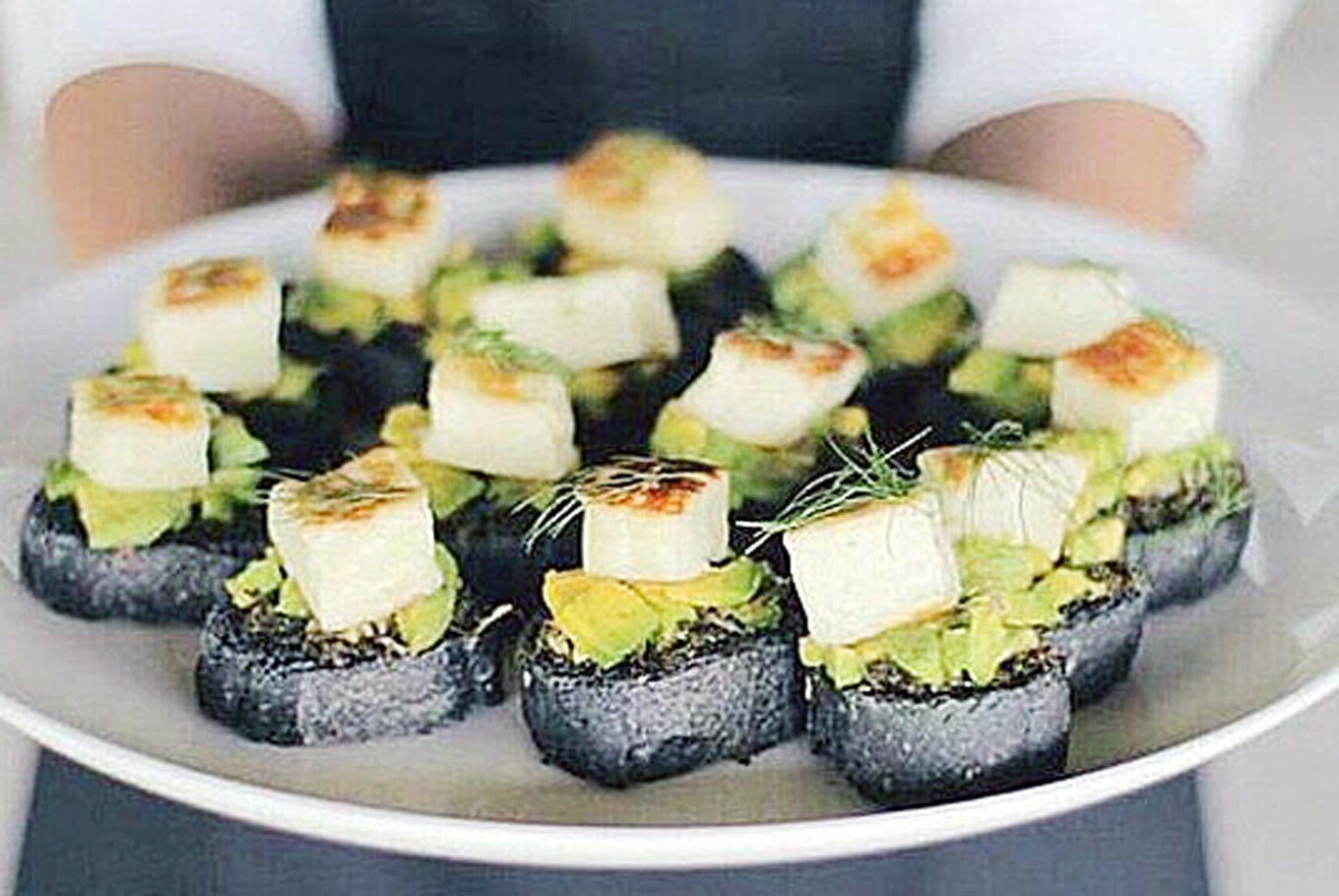 Halloumi sourdough canape(Mazaraat/File)
Halloumi sourdough canape(Mazaraat/File)
Mazaraat brought along five products that day to be sold at Satvika Bhoga: Colby, with its orange hue has the most solid texture, as well as Camembert, Gouda, Feta and Halloumi, which is like tofu and can be directly consumed or prepared as food.
Hira Jhamtani, an environmental activist and globalization writer who owns Satvika Bhoga in Denpasar, said the public should be informed about how to produce cheese so as not to depend on imports and to appreciate local materials. This is why he is interested in collaborating with Mazaraat and marketing its products.
Jamie learned cheesemaking in Canada for four months and when he returned, his cheese production at home frequently failed. It turned out that in addition to his skills and the cheese recipe, he still had to observe the temperature and examine the contents of local materials. Cheese in Italy, for example, can last when left in the open.
In November 2015, the couple’s introduced their premium cheese products at community and organic market events. Now they offer nine premium cheese varieties, but it’s not easy selling cheese at prices higher than those of factory products.
Jamie and Nieta hope a lot more cheese artisans will appear in Indonesia, so that local production of quality cheese will increase. This can be promoted, among others, by organizing cheesemaking classes and providing information about the wonders offered by its ingredients.
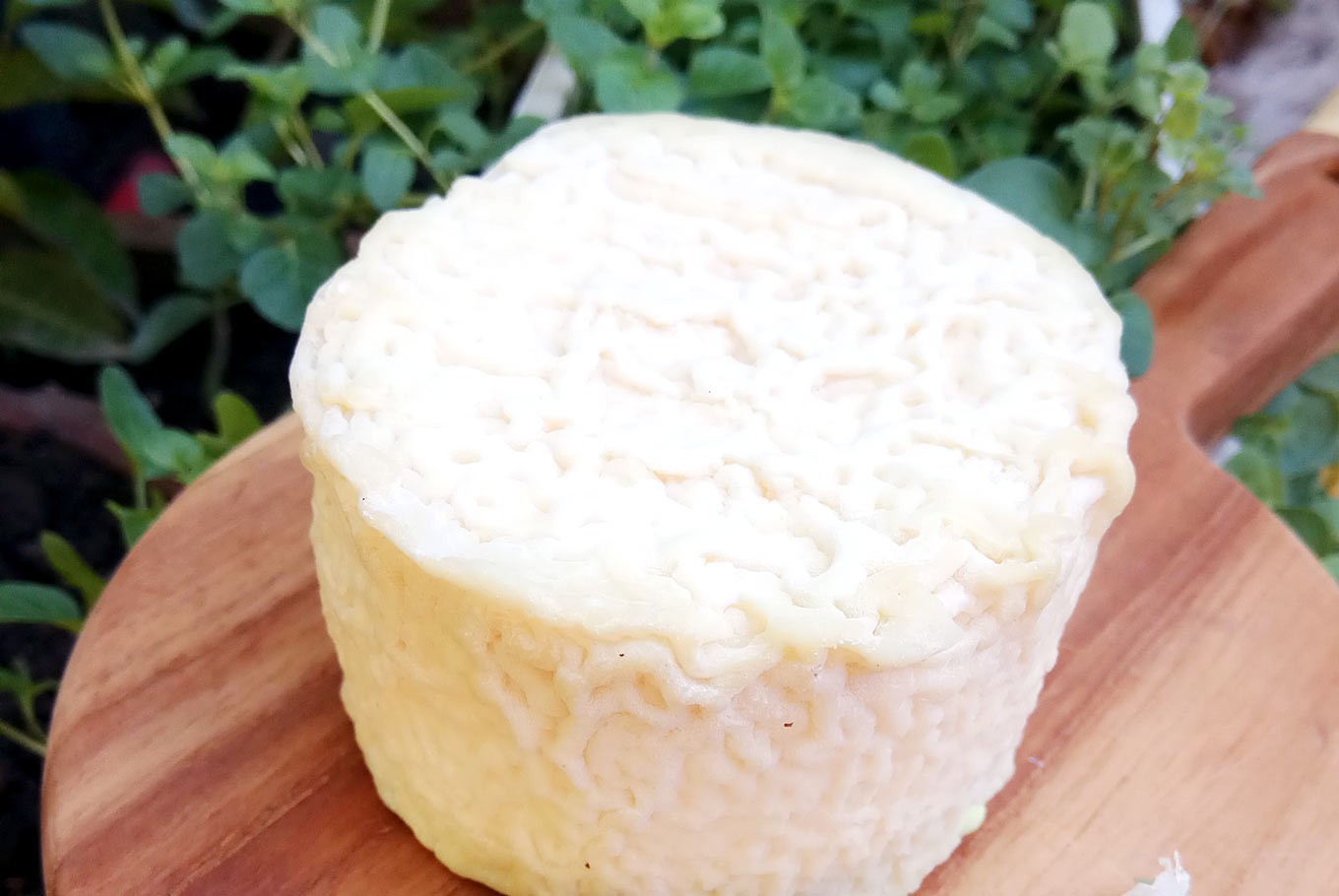 Crottin cheese(Mazaraat/File)
Crottin cheese(Mazaraat/File)
 Mozzarella(Mazaraat/File)
Mozzarella(Mazaraat/File)

